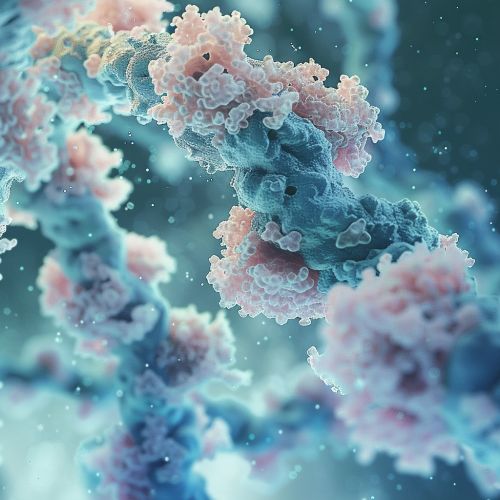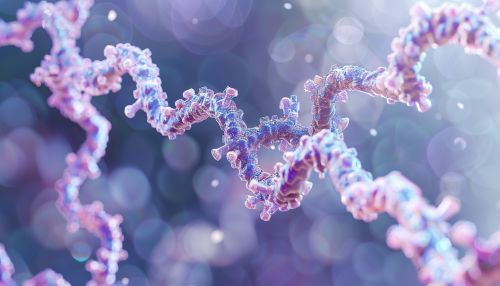Fibronectin
Overview
Fibronectin is a high-molecular weight (~440kDa) glycoprotein of the extracellular matrix that binds to membrane-spanning receptor proteins called integrins. In addition to integrins, fibronectin also binds extracellular matrix components such as collagen, fibrin, and heparan sulfate proteoglycans (e.g. syndecans).


Structure
Fibronectin exists as a protein dimer, consisting of two nearly identical monomers linked by a pair of disulfide bonds. The fibronectin protein is produced from a single gene, but alternative splicing of its pre-mRNA leads to the creation of several isoforms. Each fibronectin subunit is composed of three types of modules: type I, II, and III. All three modules are composed of two anti-parallel beta-sheets, forming a beta-sandwich. However, the manner in which the beta-sheets are arranged differs among the three types of modules.
Function
Fibronectin plays a crucial role in cell adhesion, growth, migration, and differentiation, and it is important for processes such as wound healing and embryonic development. It helps to guide cell movement during embryonic development, wound healing, and maintenance of tissue structure, by interacting with other extracellular matrix components and with cell surface receptors, particularly integrins.
Role in Disease
Abnormal fibronectin levels have been associated with a number of diseases, including cancer and fibrosis. In cancer, fibronectin levels can be significantly decreased or increased, depending on the type and stage of cancer. In fibrosis, fibronectin levels are often significantly increased.
Clinical Significance
Fibronectin has been identified as a potential therapeutic target in a number of conditions, including cancer, fibrosis, and wound healing. In cancer, strategies are being developed to target fibronectin in order to inhibit tumor growth and metastasis. In fibrosis, strategies are being developed to reduce fibronectin levels in order to inhibit the development of fibrotic tissue.
